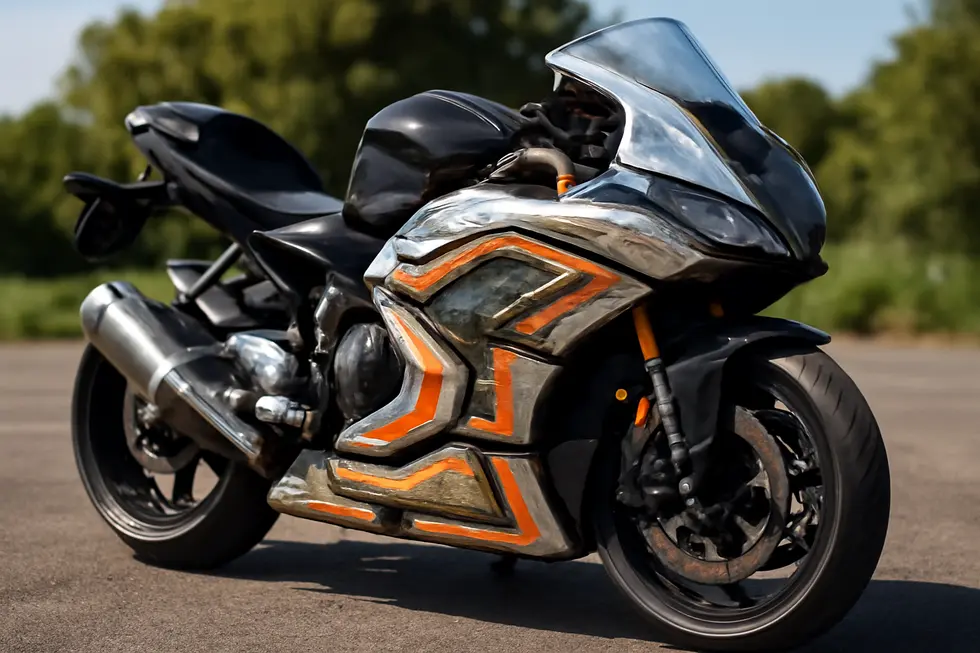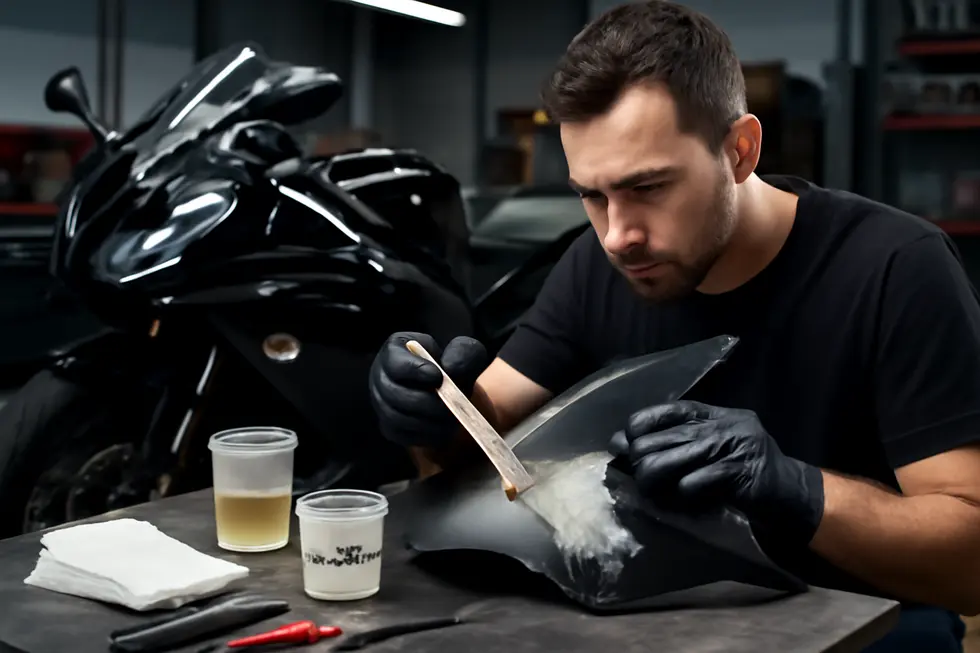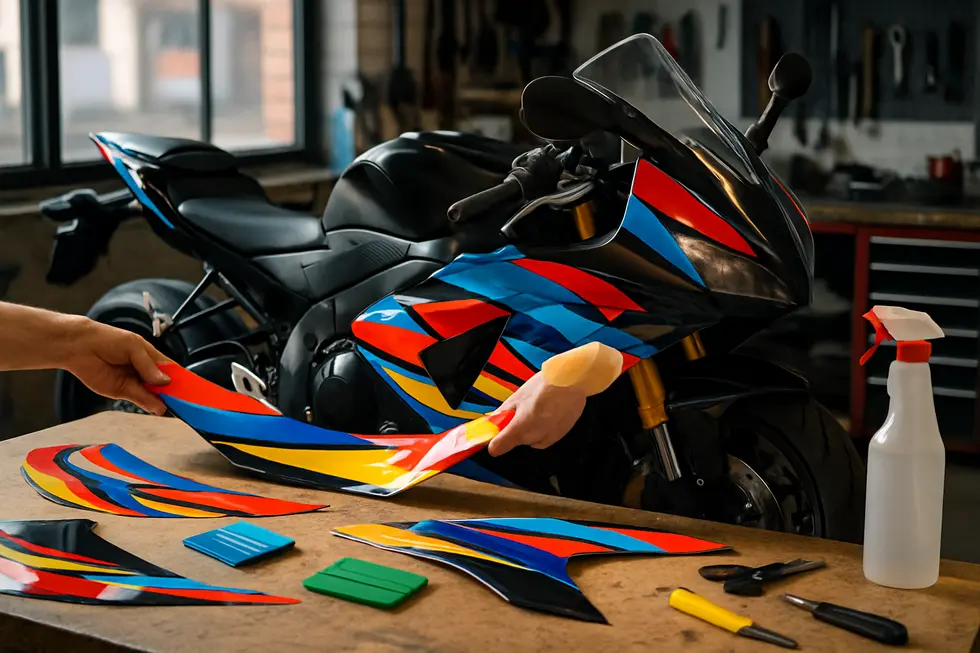Mastering Motorcycle Batwing Fairings: Enhancing Performance, Fit, and Customization
October 3, 2025 | by summitfairings
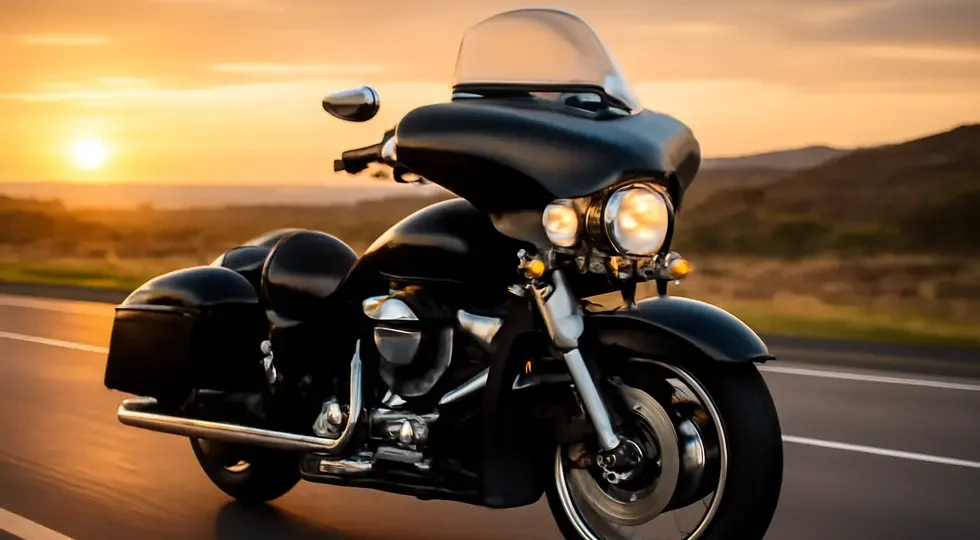
Introduction
Motorcycle batwing fairings have become a hallmark of cruiser and touring bikes, admired not only for their iconic style but for their functional benefits. For business owners in the motorcycle aftermarket industry, understanding the nuances of these fairings is crucial to meet evolving rider demands and stand out in a competitive market. These aerodynamic front panels are engineered to reduce wind impact, improve rider comfort, and elevate motorcycle aesthetics—an intersection of utility and design that drives customer value.
The discussion begins by exploring the aerodynamic design features that make batwing fairings a sought-after accessory, detailing their role in wind protection and fatigue reduction. Next, the focus shifts to material composition and ensuring model compatibility, which are vital factors influencing product quality and customer satisfaction. Finally, we delve into customization and installation considerations, touching on options that help tailor fairings to individual preferences and streamline fitment processes. Together, these chapters equip business owners with a comprehensive understanding of motorcycle batwing fairings to enhance product offerings and service delivery.
Tables of Contents
Chapter 1: Aerodynamic Design and Wind Protection of Motorcycle Batwing Fairings
- Refining Batwing Fairings: The Role of Aerodynamic Shape Optimization in Wind Management
- Seamless Windshield Integration: Enhancing Aerodynamics and Rider Comfort in Motorcycle Batwing Fairings
- How Mounting Methods Influence the Aerodynamic Efficiency and Wind Shielding of Motorcycle Batwing Fairings
- How Material Choices Shape Rider Comfort and Aerodynamic Efficiency in Batwing Fairings
Chapter 2: Material Composition and Model Compatibility of Motorcycle Batwing Fairings
- Crafting Durable Batwing Fairings: Materials and Manufacturing Techniques Behind Reliable Performance
- Precision Fitment: Navigating Model Compatibility for Motorcycle Batwing Fairings
- Innovations in Materials and Precision Fitment Driving Modern Motorcycle Batwing Fairings
- Wider Impact of Material Choices and Model Fit on the Economics and Culture of Motorcycle Batwing Fairings
Chapter 3: Customization and Installation Considerations for Motorcycle Batwing Fairings
- Engineering and Practical Insights into Customizing and Installing Batwing Fairings
- Balancing Budget and Performance: Economic Insights for Batwing Fairing Customization and Installation
- How Geopolitical Factors Shape the Customization and Installation of Motorcycle Batwing Fairings
- Cultural Expression and Practical Challenges in Customizing and Installing Batwing Fairings
Chapter 1: Aerodynamic Design and Wind Protection of Motorcycle Batwing Fairings
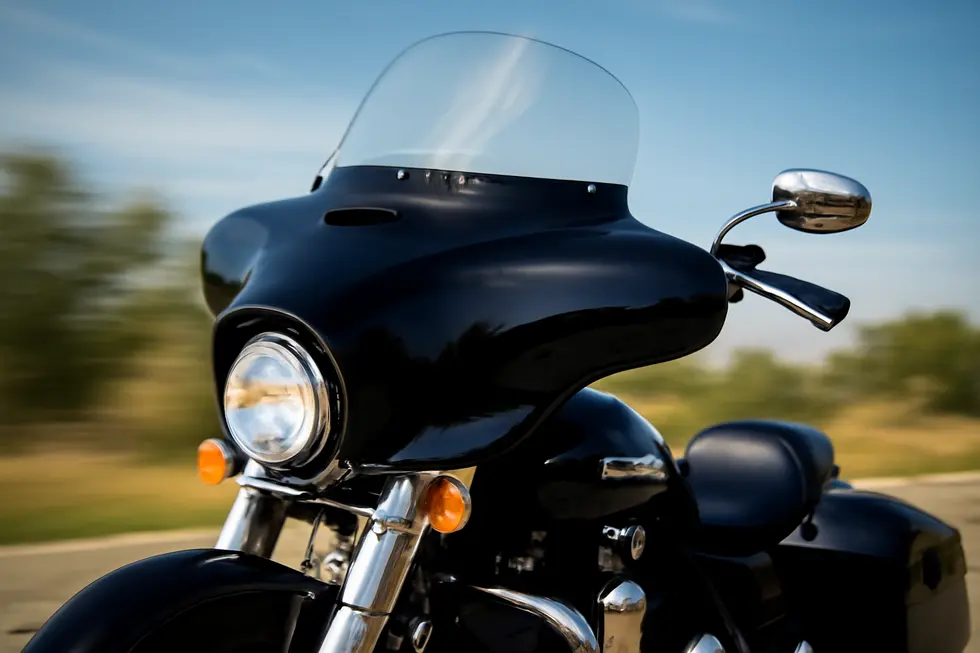
1. Refining Batwing Fairings: The Role of Aerodynamic Shape Optimization in Wind Management
Motorcycle batwing fairings owe much of their effectiveness to precise aerodynamic shape optimization. By thoughtfully sculpting these fairings, designers minimize air resistance and channel airflow smoothly around the motorcycle and rider. This optimization reduces drag that otherwise causes fatigue and instability during longer rides. The distinctive batwing profile is more than stylistic—it directs turbulent air away from the rider, enabling a steadier ride with less wind buffeting. Key aerodynamic features include sweeping contours and carefully angled surfaces that reduce wind collision and generate subtle downforce, promoting stability at highway speeds.
Materials and construction methods support this optimization, ensuring the fairings maintain their shape and function under varying wind pressures. Unlike the tightly integrated full fairings seen on sportbikes, batwing fairings balance wind protection with cruiser styling cues, allowing for comfort without sacrificing classic aesthetics. The size and curvature of windshields incorporated into the batwing design also play a vital role, refining how airflow is divided and managed across the rider’s upper body.
Through this blend of form and function, batwing fairings enhance aerodynamic performance while improving rider endurance and control. Riders can further customize aspects of these fairings to tailor airflow and comfort, highlighting the critical interplay between aerodynamic science and individual preference. For a broader perspective on fairing options that combine style with aerodynamic advantage, see this exploration of the best motorcycle fairings at Summit Fairings.
2. Seamless Windshield Integration: Enhancing Aerodynamics and Rider Comfort in Motorcycle Batwing Fairings
The integration of windshields with motorcycle batwing fairings is fundamental to achieving superior aerodynamic efficiency and effective wind protection. These windshields often feature curved or recurve profiles designed to guide airflow smoothly over the rider, significantly reducing the direct impact of wind that can cause fatigue and discomfort on long journeys. Unlike frame-mounted windshields, many batwing fairings mount the windshield directly to the handlebars, creating a unified steering and visual experience. This design elegantly complements cruiser-style bikes, though it may be more susceptible to crosswind fluctuations compared to fixed mounts.
Material choices for windshield construction, such as high-grade polycarbonate or specially formulated acrylics, maintain clear optics while ensuring durability against road debris and weathering. This clarity is vital for safe riding without sacrificing aerodynamic benefits. The windshield’s aerodynamic contour also works in unison with the batwing fairing’s shape to smooth the overall airflow, minimizing drag and turbulence that negatively affect rider stability and comfort.
By channeling air efficiently around both rider and motorcycle, the windshield-fairing assembly reduces wind noise and pressure zones, directly contributing to less rider exhaustion during extended highway travel. Customized options in windshield height, tint, and curvature further enable riders to tailor airflow control to personal preferences, blending functional performance with iconic batwing styling. This synergy between windshield design and batwing fairing architecture encapsulates the perfect balance of protection, aesthetics, and aerodynamic refinement.
Explore more about optimizing motorcycle fairings at Summit Fairings.
3. How Mounting Methods Influence the Aerodynamic Efficiency and Wind Shielding of Motorcycle Batwing Fairings
The mounting style of motorcycle batwing fairings plays a crucial role in shaping their aerodynamic efficiency and wind protection capabilities. Predominantly, batwing fairings are either handlebar-mounted or frame-mounted, each approach offering distinct effects on airflow management and rider comfort. Handlebar-mounted fairings move directly with the steering, providing a classic cruiser appearance and a connected riding feel. However, this dynamic movement can introduce increased wind turbulence and buffeting when maneuvering, potentially leading to added vibration and wind noise experienced by the rider. In contrast, frame-mounted fairings remain fixed in place, independent of handlebar movement, which stabilizes the airflow around the rider’s upper body. This steadiness markedly improves wind deflection, reducing rider fatigue on long journeys by minimizing buffeting and improving aerodynamic flow. Features such as built-in speaker cutouts can be incorporated without degrading aerodynamic function, demonstrating thoughtful design integration. Modern mounting hardware, including durable stainless steel brackets and quick-release systems, further enhances stability while simplifying installation and removal. Such hardware ensures that aerodynamic shapes and windshield angles are consistently maintained, vital for optimizing wind protection and minimizing drag. Selecting the appropriate mounting method balances the iconic styling preferences with functional demands, underlining how these installation choices intimately influence the fairing’s role in enhancing rider comfort and aerodynamic performance. This nuanced interaction between mounting style and aerodynamic design is integral to the enduring appeal and effectiveness of batwing fairings in cruiser and touring motorcycles. For riders interested in a broad range of mounting and fairing options, there are extensive resources that explore these components in depth.
4. How Material Choices Shape Rider Comfort and Aerodynamic Efficiency in Batwing Fairings
Motorcycle batwing fairings blend material innovation with aerodynamic precision to enhance rider comfort and wind protection. The selection of materials directly influences how effectively these fairings can deflect wind, reduce vibrations, and maintain durability under diverse riding conditions.
Fiberglass remains a preferred option due to its lightweight and moldability, allowing for sleek, aerodynamic contours that channel airflow smoothly around the rider. Its vibration-dampening qualities contribute to a quieter ride, especially when combined with inner padding or lining, which also helps reduce wind noise. This creates a more comfortable riding environment, particularly on long journeys.
ABS plastic offers another balance of durability and lightness. Its impact resistance ensures the fairing maintains shape and function even under moderate stress. By preserving aerodynamic integrity without adding excess weight, ABS supports precise handling and minimizes fatigue caused by wind buffeting and handlebar vibrations.
While aluminum provides superior strength and ruggedness, it tends to transmit more vibration due to its rigidity and adds weight that may alter bike handling. Hence, it is less common but valued in situations demanding extra durability.
Beyond materials, features such as curved windshields and adjustable mounts integrate with the design to optimize airflow management and rider customization. Tinted options can further enhance comfort by reducing glare.
Together, these material and design choices form a cohesive system that not only shapes the iconic batwing silhouette but also significantly elevates the riding experience by balancing aerodynamic efficiency with lasting comfort. For riders interested in exploring diverse fairing options tailored for performance and style, more insights are available through dedicated motorcycle fairings resources.
Chapter 2: Material Composition and Model Compatibility of Motorcycle Batwing Fairings
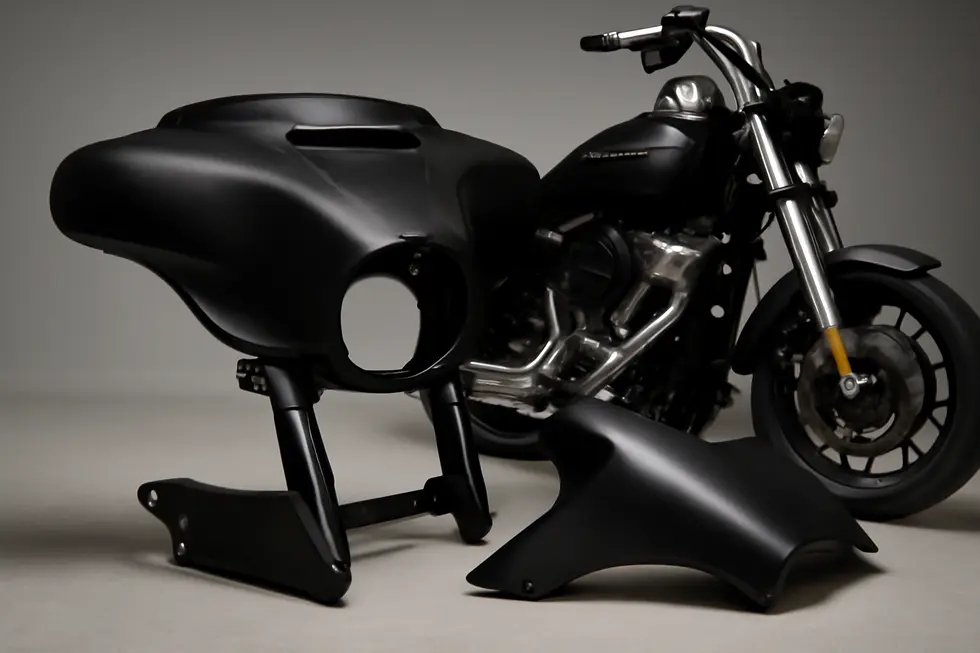
1. Crafting Durable Batwing Fairings: Materials and Manufacturing Techniques Behind Reliable Performance
Motorcycle batwing fairings owe their strength and longevity to carefully selected materials and precise production methods. The most common material, ABS plastic, combines lightweight construction with impressive impact resistance. Its compatibility with injection molding allows manufacturers to achieve consistent shapes and structural integrity, while also providing a surface ready for painting or customization. Fiberglass also plays a significant role, offering enhanced strength and smooth finishes through vacuum forming or hand lay-up techniques. Though more labor-intensive, fiberglass fairings appeal to riders seeking a balance between durability and aesthetic refinement.
Polycarbonate occasionally features in windscreen components due to its exceptional clarity and resilience against impacts. Aluminum batwing fairings, while less prevalent because of added weight, deliver superior toughness using metal forming and welding processes. These aluminum options suit those prioritizing robustness over weight savings.
Design considerations extend beyond materials; batwing fairings incorporate mounting brackets and hardware engineered for secure installation on specific motorcycle models. Some even include quick-release systems, easing removal for maintenance or customization. Integrated features like curved windshields and provisions for electronics highlight the fairing’s multifaceted role.
Overall, the choice of materials and manufacturing methods ensures batwing fairings provide essential wind protection and durability without compromising style or fitment. Riders looking for detailed options can explore extensive catalogs and expert insights, including those shared at Summit Fairings’ blog, a reliable resource on motorcycle fairings.
2. Precision Fitment: Navigating Model Compatibility for Motorcycle Batwing Fairings
Motorcycle batwing fairings are intricately designed to align with specific models, most notably within Harley-Davidson’s touring lineup. These fairings commonly fit bikes such as the Electra Glide, Street Glide, Ultra Classic, Limited, and Road King, spanning model years generally from the mid-1990s through the early 2010s, with some extending into newer production years. Compatibility depends heavily on the exact model and year due to varying mounting points, hardware, and design evolutions. Aftermarket batwing fairings reflect this specificity, often crafted to replace or upgrade factory-installed fairings for these Harley-Davidson models. Variations between brands and fitment tolerances mean riders must verify compatibility before purchase to ensure seamless integration.
Beyond Harley-Davidson, batwing fairings are rarely standard but can be found as aftermarket options for select cruisers, such as certain Honda models. These occasions typically demand custom modifications, including drilling or bracket adjustments, to achieve a proper fit. Fit kits tailored for Harley-Davidson touring bikes further facilitate precise installation, yet they rarely extend support to non-Harley motorcycles.
The evolving design of newer Harley-Davidson models, especially premium editions post-2023, introduces additional complexity, sometimes rendering standard aftermarket batwing fairings incompatible without specialized parts. This nuance necessitates careful research and consultation with manufacturers or fitment guides prior to acquisition.
For deeper insights into fairing options tailored to various models, one can explore accessible resources such as the extensive and well-curated selections offered by Summit Fairings, which detail compatibility alongside customization prospects.
3. Innovations in Materials and Precision Fitment Driving Modern Motorcycle Batwing Fairings
The evolution of motorcycle batwing fairings reflects a sophisticated blend of material science and tailored engineering to achieve superior aerodynamics, durability, and rider comfort. Advanced manufacturing processes now incorporate high-strength composite plastics designed for lightweight resilience, enabling fairings to withstand variable riding conditions while reducing overall bike weight. Virtual wind tunnel simulations have become a key tool, allowing designers to optimize shapes that minimize wind pressure on riders without the need for traditional trim reinforcements.
Beyond material refinement, model-specific compatibility has transformed the fitting process. Fairings crafted to match the exact frame contours and mounting points of specific motorcycles eliminate extensive modifications, enhancing both installation efficiency and finished aesthetics. This precision approach also supports integration with modern motorcycle features, from advanced suspension systems to high-tech infotainment panels, reflecting a holistic focus on performance and rider experience.
Particularly in cruiser and touring segments, these innovations preserve iconic styling while advancing functional benefits—ensuring that batwing fairings contribute meaningfully to wind protection and fatigue reduction. Riders can now access a diverse array of fairings in various colors, finishes, and transparency levels, enabling personalization that complements the bike’s character and the owner’s demands. Together, these technological strides highlight how refining materials and exact-fit designs have solidified batwing fairings as essential, high-performance accessories in the motorcycling world.
For more insights on tailored motorcycle components, explore our detailed guides at Explore the Best Motorcycle Fairings at Summit Fairings.
4. Wider Impact of Material Choices and Model Fit on the Economics and Culture of Motorcycle Batwing Fairings
Material composition and model compatibility of motorcycle batwing fairings extend beyond technical aspects, deeply influencing economic trends, geopolitical dynamics, and societal values within the riding community. The selection of lightweight, aerodynamic materials enhances fuel efficiency, reducing operating costs significantly, similar to aerodynamic advancements in other vehicle sectors. This drives demand and innovation in both the OEM and aftermarket sectors, where multi-model compatible fairings foster broader consumer access and promote competitive pricing.
Global supply chains for plastics, composites, and metals essential in fairing manufacture are sensitive to international trade policies and geopolitical tensions. These factors impact production costs, availability, and the pace of design innovation, often concentrated in regions with advanced manufacturing capabilities. Compliance with varying safety standards across countries further shapes design and export strategies.
On a societal level, well-designed batwing fairings improve rider safety by mitigating wind fatigue and integrating visibility enhancements, contributing to reduced accident risk and heightened comfort. Beyond function, the iconic styling and customizable options reinforce cultural identity, fostering camaraderie and brand loyalty among enthusiasts. However, compatibility challenges for less common motorcycle models may limit these benefits, creating disparities in rider experience.
Thus, the interplay of materials and fitment not only drives economic efficiency and geopolitical considerations but also shapes the environmental footprint and social fabric of the motorcycling world. For those seeking a comprehensive selection of compatible motorcycle fairings, resources such as Summit Fairings provide valuable options tailored to diverse rider needs.
Chapter 3: Customization and Installation Considerations for Motorcycle Batwing Fairings
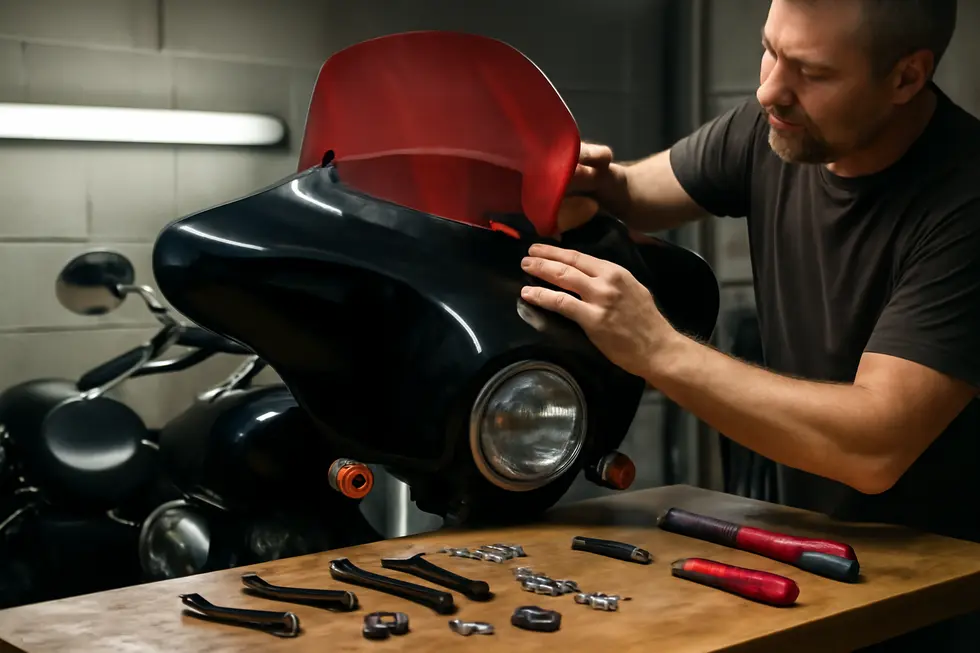
1. Engineering and Practical Insights into Customizing and Installing Batwing Fairings
Modern motorcycle batwing fairings blend advanced materials with thoughtful design to optimize both rider comfort and bike performance. Constructed from resilient ABS plastic, fiberglass, or carbon fiber composites, these fairings balance durability with lightweight convenience. Their aerodynamic contours are engineered to channel airflow effectively, reducing wind fatigue during extended rides. Integral mounting hardware often employs corrosion-resistant metals, such as stainless steel and CNC-machined aluminum, ensuring long-term structural integrity.
Customization possibilities extend well beyond paint, encompassing features like integrated LED lighting, audio systems, and GPS mounts that riders can tailor to individual preferences. Choosing between frame-mounted and handlebar-mounted configurations influences both the fairing’s aerodynamic efficiency and handling characteristics—frame mounts provide superior stability and vibration isolation, whereas bar mounts enable a more direct connection with the motorcycle’s steering. Installation involves careful electrical integration, particularly when adding aftermarket components, as wiring must be routed to avoid interference with steering mechanisms and safeguard reliability.
Cutting-edge mounting solutions simplify the process by enabling tool-free attachment and removal, offering flexibility without compromising security. While universal kits provide adaptability across various models, precision-fit options deliver seamless integration but may involve more complex installation steps. The nuanced interplay of material choice, mounting style, and customization features collectively shapes both the aesthetic appeal and functional performance of batwing fairings.
For riders seeking extensive customization resources and installation guidance, exploring comprehensive motorcycle fairing solutions can provide valuable insights and support.
2. Balancing Budget and Performance: Economic Insights for Batwing Fairing Customization and Installation
Customizing and installing motorcycle batwing fairings requires careful economic consideration beyond mere aesthetics. The initial cost varies greatly depending on materials, design complexity, and brand reputation. Basic ABS plastic fairings offer affordability but may lack advanced features, while premium models with integrated lighting and audio systems demand a higher investment. Riders must evaluate how these choices impact long-term value and potential upgrade expenses.
Compatibility plays a central role in economic efficiency. Fairings tailored to specific models guarantee a precise fit, reducing the need for costly modifications that universal options often require. This minimizes both time and professional labor costs during installation. Customizable windshield sizes and tints further allow riders to invest in only what they truly need, optimizing their budget.
Installation expenses also influence overall cost, as bolt-on designs with plug-and-play wiring simplify the process and limit professional intervention. Conversely, fairings necessitating drilling or fabrication increase labor time and expenses. Riders weigh the trade-off between upfront complexity and the benefits of enhanced features.
Longevity and maintenance costs factor into the financial equation as well. High-quality materials tend to resist wear and maintain appearance longer, preserving resale value. Integrated electronics require occasional upkeep, which adds to ongoing costs.
The decision between OEM and aftermarket also affects pricing, warranty coverage, and quality assurance. OEM parts are pricier but often save money by avoiding fitment issues.
For riders seeking comprehensive options and economic guidance on batwing fairings, exploring curated selections can offer valuable insights into balancing style, performance, and budget. For more tailored information, visit affordable motorcycle fairings at Summit Fairings.
3. How Geopolitical Factors Shape the Customization and Installation of Motorcycle Batwing Fairings
The customization and installation of motorcycle batwing fairings are deeply influenced by geopolitical factors that extend beyond mere aesthetics or function. Manufacturing origins play a critical role—many fairings come from countries with complex trade relationships, where tariffs and import restrictions can raise costs or delay availability. Such challenges often compel riders and custom shops to seek locally produced alternatives or adapt installation techniques based on the materials at hand, affecting durability and fit.
Regulatory environments differ widely across regions, with strict vehicle modification standards imposed in some areas. These laws affect acceptable materials, designs, and mounting methods, requiring installers to ensure compliance to avoid legal issues. Countries within certain trade blocs often harmonize regulations, while others maintain unique standards, adding complexity to cross-border customization choices.
Cultural preferences shaped by regional motorcycle traditions also influence how batwing fairings are styled and installed. While the batwing shape is emblematic in American cruiser culture, other regions may favor different fairing types or bespoke customization practices reflective of local tastes and road conditions. This variation means installation crews tailor their approaches based on regional expertise and common motorcycle models.
Environmental and climate considerations tied to geopolitical regions further impact material selection and mounting strategies. Coastal or tropical climates demand corrosion-resistant components to withstand humidity, whereas colder regions prioritize durability against road salt and ice.
Integrating these geopolitical dimensions allows riders and installers to navigate practical constraints and local nuances, achieving functional, compliant, and visually appealing batwing fairing setups. For a broad range of customization options aligned with diverse regional needs, exploring reputable sources for motorcycle fairings offers invaluable insights.
4. Cultural Expression and Practical Challenges in Customizing and Installing Batwing Fairings
Customization of batwing fairings goes beyond mere aesthetics, acting as a powerful form of personal and cultural expression among motorcycle enthusiasts. Riders invest in tailored paint jobs, chrome details, and integrated audio systems to reflect their identities and connect with communities sharing similar styles and values. This personalization fosters camaraderie yet also highlights socioeconomic disparities, as customizing fairings can involve considerable expense. Moreover, public perception of customized motorcycles is double-edged; while these bikes symbolize freedom and skilled craftsmanship, they may also face stereotypes related to noise or recklessness.
Technically, installing a batwing fairing demands precision to preserve the aerodynamic benefits they provide. These fairings, often crafted from durable plastics, are engineered to reduce wind resistance and rider fatigue, but improper mounting can compromise those advantages. Securing hardware carefully and ensuring correct alignment is vital to prevent increased drag or turbulence. Additionally, integrating electrical components like lighting or audio requires attention to wiring routes to avoid damage.
Height and shape of windshields paired with batwing fairings further refine airflow management, contributing to comfort on long rides. Some advanced aftermarket designs even redirect air around the helmet more effectively, though riders must verify compatibility and prepare for minor modifications during installation. Understanding both the cultural significance and installation intricacies of batwing fairings enriches how riders experience their machines and influences broader attitudes toward motorcycle culture.
For insights into diverse fairing options and installation tips, explore comprehensive resources on motorcycle fairings that cater to customization and performance.
Final thoughts
Motorcycle batwing fairings represent a strategic intersection of aerodynamic engineering, material science, and rider personalization—each playing a critical role in defining the aftermarket value proposition. For business owners, a deep understanding of how these fairings reduce wind fatigue, the importance of using durable materials such as ABS plastic, and compatibility with popular motorcycle models lays the foundation for offering superior products that meet both functional and aesthetic demands.
Furthermore, embracing customization and simplifying installation processes not only enhances customer satisfaction but also differentiates your brand in a crowded marketplace. By focusing on these core areas, businesses can confidently cater to a passionate community of cruiser and touring motorcycle riders who prioritize comfort, style, and performance.
Navigating the nuances of batwing fairings ensures that your enterprise delivers products that riders trust, invest in repeatedly, and recommend enthusiastically—an investment in knowledge that pays dividends in reputation and revenue.
Ready to elevate your ride? Summit Fairings delivers premium, custom-fit fairings that blend style and durability. Whether you’re chasing speed or turning heads, we’ve got your bike covered. Don’t wait—transform your machine today. Click, customize, and ride with confidence. Your perfect fairing is just a few clicks away. Act now!
About us
undefined
RELATED POSTS
View all

